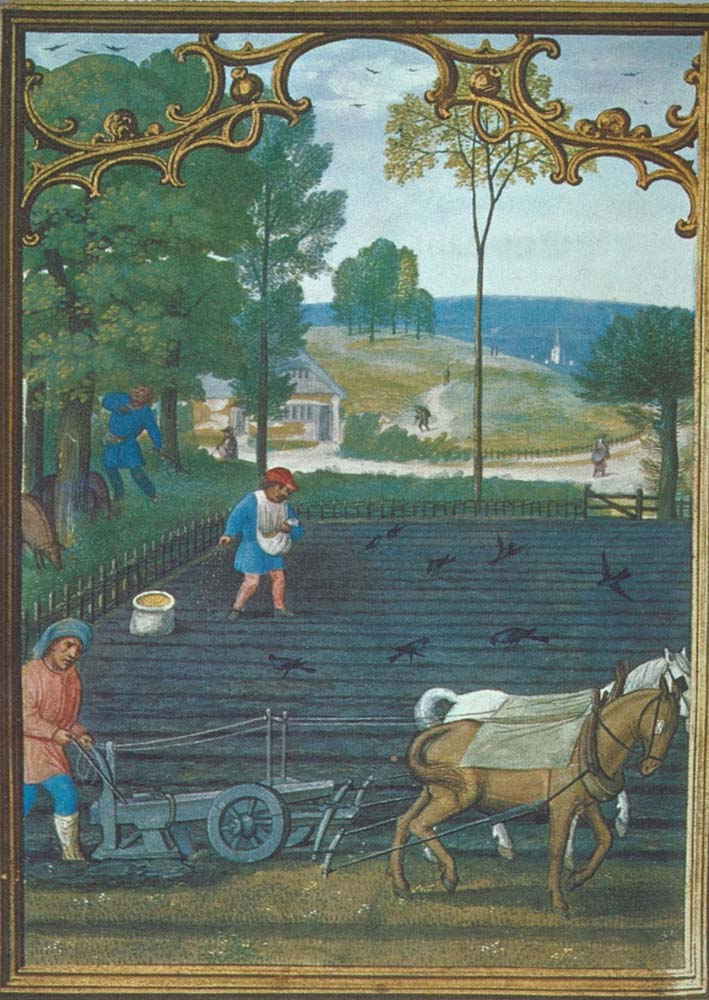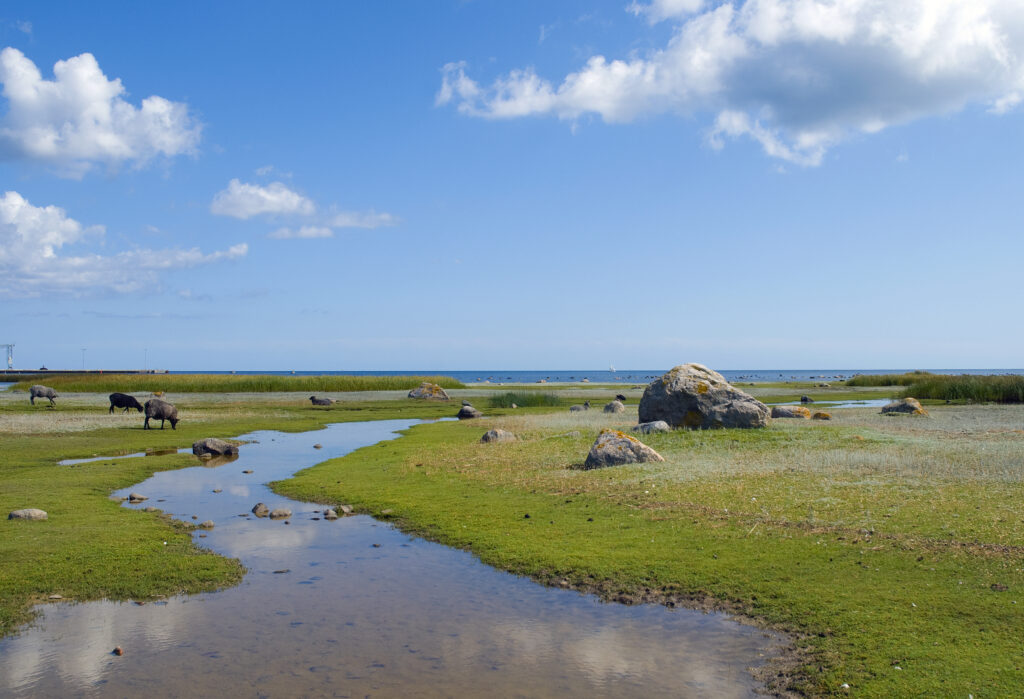by Grace Zoldak and Jenna Nahhas
Rats bear the burden in most discussions about how the Black Death devastated the medieval world. But historians interested in the effects rather than cause of the plague have recently shifted their focus from fauna to flora and landed on an unexpected piece of the puzzle: pollen.
The Black Death pandemic was a bubonic plague that struck Europe, Asia, and North Africa during the mid 14th century CE. Historians have mostly relied on medieval primary sources when estimating its mortality rate. But a new study used pollen in order to more accurately evaluate the Black Death’s mortality rate on a regional scale.
Population Demographics: From Peter’s Pence to Pollen

Historians have estimated some medieval demographics in the past using surviving records of Peter’s Pence, an annual tax paid by landowners in northern Europe to the papal treasury in Rome. For example, the amount of taxes paid in Sweden was consistent from 1345 to almost 1350. Therefore, it can be inferred that there were not any drastic demographic changes during that time period. However, in 1350, roughly two years after the initial outbreak of the Black Death, the amount paid to the papal treasury fell to roughly 65% of its 1345 amount. This decrease in tax revenue remained relatively consistent until at least 1355. If the papal treasury is receiving less payment, then the population must have significantly declined. But Peter’s Pence can only reveal demographic changes within lands that reported to the papacy. This is where pollen steps in.
How does pollen reveal the rate of death over 600 years ago? The key is agriculture. Society in the Middle Ages was pre-industrial and therefore depended on rural labor. The peasants who did this work accounted for a large portion of the population, and their cultivated fields produced certain pollens. However, as more peasants succumbed to the plague, fields were left to grow wild flora or become pasture land, both of which produced different pollens than agriculture did. Pollen deposits in water such as wetlands recorded the kinds and amount of flora. Therefore, an estimate of the peasant population can be determined through regional pollen counts.
Pollen Study Fills in the Gaps

The scientists conducting a new study aimed to determine the variation of Black Death mortality rates across Europe, specifically Sweden and Poland. Using Big Data Paleoecology (BDP)—the study of interactions between once-living organisms and their environment—they studied the record of pollen grains and other spores in both living and fossil forms. They began by gathering pollen records from coring sites, locations from which scientists can obtain a representative sample of geologic formations by drilling into the earth. From the 1,634 fossilized pollen samples collected from 261 coring sites, they carbon dated the pollen species to isolate those from 1250-1450 CE, the period in which the bubonic plague was most active. Once selected, they organized the pollen samples to determine how prolific certain pollens were in each region. They then used the results to categorize each country and region into one of four agricultural change scenarios according to the increase or decrease in pollen count.
The BDP method confirms population decline found in Peter’s Pence. The study looked at the pollen produced by specific agricultural cereals. Sweden had a higher standard percentage of these cereals from the years 1250-1350 CE than it did from the years 1350-1450 CE. Pollen records in Poland revealed a similar trend of decreased agricultural output.
Because the BDP method independently confirmed the pre-established demographic changes identified using Peter’s Pence, scientists and historians alike can trust it to yield accurate results when applied to regions that have not been previously studied. So how deadly really was the Black Death? Well, the pollen is there to read, hidden in wetland fossils for anyone willing to get their boots wet in the name of historical discovery.
Grace Zoldak is an Ohio Wesleyan University sophomore majoring in History with a minor in Medieval Studies. She loves collecting antiques, reading old history books, and listening to turn of the century Belgian violin music. If she could live at any time and place, she would live out her Little House on the Prairie dreams on a Midwestern settlement.
Further reading:
Benedictow, Ole. “The Black Death: The Greatest Catastrophe Ever,” History Today. https://www.historytoday.com/archive/black-death-greatest-catastrophe-ever.
Czech Quaternary Palynological Database. https://botany.natur.cuni.cz/palycz/.
European Pollen Database. https://epdweblog.org/.
Izdebski, Adam, et al. “Palaeoecological data indicates land-use changes across Europe linked to spatial heterogeneity in mortality during the Black Death pandemic,” Nature Ecology and Evolution. https://www.nature.com/articles/s41559-021-01652-4.
Pennisi, Elizabeth. “Black Death Left a Mark on Human Genome: DNA of different communities evolved in a similar way to deadly epidemic,” Science. https://www.science.org/content/article/black-death-left-mark-human-genome.
Zimmer, Carl. “Did the ‘Black Death’ Really Kill Half of Europe? New Research Says No.” The New York Times. https://www.nytimes.com/2022/02/10/science/black-death.html#:~:text=%E2%80%9CThe%20data%20is%20sufficiently%20widespread,the%20plague%2C%20wrote%20in%202005.
Cover image The Harvesters by Pieter Bruegel the Elder, 1565. Courtesy of The Metropolital Museam of Art under an Open Access Public Domain policy, https://www.metmuseum.org/art/collection/search/435809.
a Plow medieval. Public domain, via Wikimedia Commons. https://commons.wikimedia.org/wiki/File:Plow_medieval.jpg.
b Wetland, Gotland, Sweden. Uploaded by Berit from Redhill/Surrey, UK, CC BY 2.0 https://creativecommons.org/licenses/by/2.0, via Wikimedia Commons.https://commons.wikimedia.org/wiki/File:Wetland,Gotland,_Sweden(6237000716).jpg.